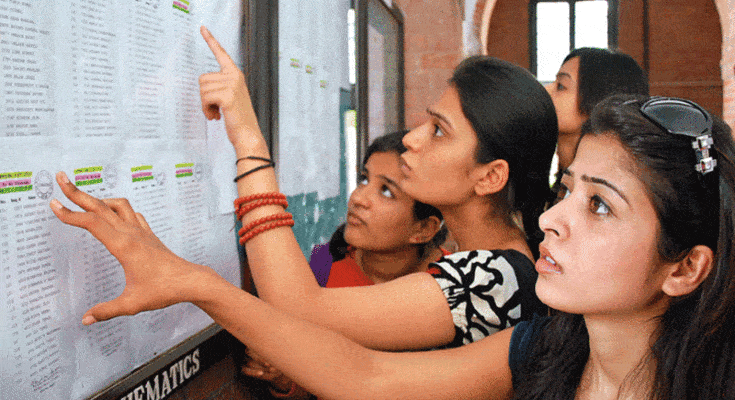Shutting down of educational institutions in the wake of the coronavirus pandemic has necessitated the need for teachers to shift their lectures to the web.
“XYZ is inviting you to a scheduled Zoom meeting” sliding into my mail whenever my professors wish to take a lecture is a notification that never fails to abruptly remind me of how much the world has changed and that I have been under quarantine, along with the whole country, for the past three weeks, something which I tend to forget from time to time having become so accustomed to it already, though in my defence, there is nothing very memorable about the quarantine or the “entity” that made it necessary, the coronavirus pandemic.
Infecting more than a million people across the world, and taking the lives of more than a hundred thousand, the coronavirus pandemic can be considered one of the most devastating and unfortunate events in human history. With lockdowns being announced, almost all corporate offices, private and public sector companies and educational institutions have been forced to pull down their shutters.
Consequently, most official enterprises, be it meetings or seminars, have moved to online platforms, with teleconferencing applications like Skype and Zoom experiencing a swarm of new users. These new “migrants” also include university professors and school teachers, along with their students.
While the idea of online teaching is not new, with many online educational platforms having been in existence for the past few years, the manner and the magnitude at which colleges and schools have unanimously adopted it recently is unprecedented. There are mainly two modes of transmission – sharing pre-recorded videos of the teacher with students or the teacher video-conferencing simultaneously with every student. The latter tends to get preferred over the former as it allows students to put forth their doubts there and then, along with the fact that the teacher can change the direction of teaching according to the prevailing line of thought going around his/her class.
Online teaching has its benefits. Since it allows the teacher and the student to be a part of the classroom from the comfort of their homes, it cuts the time and financial costs of house-to-school or house-to-college commute, as well as allowing sick students to attend their classes, which they otherwise wouldn’t have. “I was bedridden due to a minor surgery for a few days last week but I still didn’t miss any teaching as all my classes were being held online”, said a University Of Delhi student, on the condition of anonymity.
Commuting to one’s college or school everyday and staying there for 5-6 hours undoubtedly causes fatigue which hinders one’s attention during offline lectures, something which doesn’t happen in the case of online ones.
“Zoom goes from conferencing app to the pandemic’s social network”, reads the headline of an article by Drake Bennett in the Bloomberg Business Week. The application is one of the biggest gainers of the sudden surge in online lectures, with downloads experiencing a boom from a mere 10 million to a whopping 200 million across devices. Being easy to operate and handle, it has even been patronized by the older not-so-tech-savvy generation of university professors.
But the problems of online lectures also start with Zoom. It has come under immense scrutiny for its relatively lax security systems, especially the absence of end-to-end encryption, which makes it prey to possible data theft. Since public zoom meetings can be accessed by merely opening the link for it, there have been numerous cases where hackers and mischief-mongers have hijacked meetings and lectures armed with offensive slogans, inappropriate images, abusive texts and racial slurs. “Zoombombing”, as this act is commonly known as, has forced many companies like Google and SpaceX to ban the usage of the application in its offices. Schools in Singapore and Taiwan have followed suit.
In fact, the application has been accused of spying on and recording personal user data, as well as tinkering with the in-built software of computers. Brian Feldman, in an article for the New York Magazine rubbished these claims and claimed that the problems were “sloppy rather than malicious”, though he sharply criticized the application, writing “..a billion dollar company seems to be held together with a duct tape and string.” Zoom’s CEO, Eric Yuan apologized for the glitches and attributed them to the company not having been prepared for such an enormous boom in its user base while also assuring implementation of stronger security measures in the coming weeks.
Besides Zoom’s complications, the most prominent drawback of an online lecture is the shunting out of students without internet access or electronic device access, especially in India where a large chunk of students come from rural backgrounds or poor families. This goes against the principles of government institutions which were established to provide equal education to all.
Additionally, in case of some components of subjects composed of a considerable amount of quantitative analysis or those containing figures and graphs, say Economics or Physics, it gets a tad difficult to comprehensively expound the learning matter through mere audio explanation or by writing on a notebook. Though this problem can be solved by the use of slideshow presentations. Ethically, there also tends to a lack of seriousness in the case of an online class when compared to an offline one since there is an absence of a disciplined classroom atmosphere. “I often end up browsing through my phone or laptop during lectures, or sometimes even worse, I turn off my video and leave to do something else.”, said a student of Daulat Ram College, on the condition of anonymity.
Nevertheless, the world was not prepared for these recent unfortunate developments, and adult office-goers and college students alike, and the Zoom application, despite its complications, have done a commendable job in keeping the show running partially. And with doctors and nurses across the world volunteering for the treatment of infected patients, medical experts and scientists working day and night for a cure or a vaccine, governments introducing strict movement restrictions and responsible citizens complying to these restrictions, one can hope that by the end of this year, professors and their students shall return to their classrooms.
Featured Image Credits : Anukriti Mudgil for DU Beat
Araba Kongbam
[email protected]




